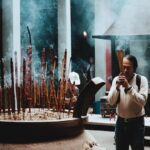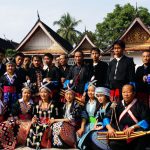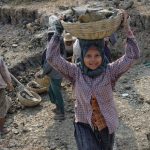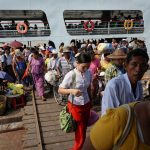Red Cross

The Cambodia Red Cross (CRC) is the principal humanitarian society in Cambodia. The government has designated it as an auxiliary to public bodies offering humanitarian assistance. In addition to the national headquarters, the CRC has 25 branches.1 CRC was founded in 1955 and has worked ...
Pandemics

Pandemics are disease epidemics that spread from person to person as a result of human-to-human transmission. Many medical texts do not define the term “pandemic”. However, some key characteristics of pandemics, including wide geographic spread, disease movement, novelty, severity, high attack rates and explosiveness, minimal ...
Administration

Cambodia’s sub-national administration consists of three tiers: capital city/province, municipality/district and sangkat/commune. Phnom Penh is the capital, and there are 24 provinces, 159 districts (including 26 municipalities and 12 khans), 1406 communes and 227 sangkats. ...
Overview of Religions in Vietnam

Vietnam is a multi-ethnic, multi-cultural and multi-religious country. Vietnam was among 12 countries in the world and six countries in the Asia Pacific region, recognized as having a very high degree of religious diversity under global religious diversity surveys by the Pew Forum Institute (USA).109 ...
Priority health concerns

Two daughters look at their mother who is dying from HIV/AIDS, Cambodia. Photo by World Bank, taken in 2002. Licensed under CC BY-NC-ND 2.0.Two common features mark Cambodia’s major health concerns:Some health figures are among the worst in the world – the 26 cases of ...
Expropriation

The Constitution of the Kingdom of Cambodia and the Land Law of 2001 both guarantee an individual’s right to property protection. Though part of the Government’s policy framework since 2002, not until 2010 did a legal framework exist to govern the process by which the ...
Ethnic minorities and indigenous people

Lao PDR is the most ethnically diverse country in Southeast Asia. Lao people comprise four main ethno-linguistic families: Lao-Tai (62.4 percent), Mon-Khmer (23.7 percent), Hmong-Iu Mien (9.7 percent), and Chine-Tibetan (2.9 percent)206, which are officially divided into 50 ethnic groups207 The 50 ethnic groups in ...
National parks and wildlife sanctuaries

Cambodia’s national parks (or ‘natural parks’) and wildlife preserves were established under the 1993 Royal Decree on the Protection of Natural Areas. Although other areas have been added subsequently, there is currently no officially available list of all protected areas and their boundaries. ...
Cassava

Cassava is a significant contributor to the agricultural sector in Cambodia. The planting, harvesting, processing and export of cassava provides jobs and livelihoods for thousands of Cambodians. Cassava is a significant cash crop for Cambodian farmers.282 Cassava production in Cambodia has increased substantially since 2006. ...
Taxation

Heavy trucks on a street in Phnom Penh, Cambodia. Photo by Phalinn Ool, taken on June 15 2015. Licensed under CC BY-NC-ND 2.0The Cambodian government’s 2014–18 Revenue Mobilization Strategy aimed to enhance revenue administration and strongly increase the collection of taxes and other revenue. The ...
Procurement

“Stopping corruption may start from us” (Khmer version on Clean Hand poster), in Kratie province, Cambodia. Photo by World Bank Photo Collection, taken on November 22, 2006. Licensed under CC BY-NC-ND 2.0In Cambodia, the activities of buying goods, construction work, repairs, and services and consultation ...
Labor

The rapid growth of a young adult population in Myanmar will affect the socio economic development plan of the country. Investment in skills development, employment and livelihood opportunities is necessary to cater for the growing and the emerging youth bulge to create favorable conditions for ...
Communal land

Though there are multiple forms of communal property, the rights associated with indigenous communal property are subject to significant legal and socio-economic issues. Indigenous communities are culturally very different from the rest of Cambodia, and the law provides them with the opportunity to obtain collective ...
Oil refineries

There is currently no oils refinery in Cambodia. Although a refinery has been planned, its construction has been delayed several times, reportedly over financing difficulties. ...
Population and censuses
table { width: 100%; } table td { vertical-align: middle; } Cambodians gathering along the Chaktomuk riverside in Phnom Penh to watch boat racing during the Water Festival. Photo by Patrik M. Loeff, taken on 24 November 2007. Licensed under CC BY-NC-ND 2.0.PopulationProvisional results from ...
Energy for transport

In Cambodia, petroleum is traditionally the main source of energy for transportation. The petroleum fuels used for transportation include gasoline, diesel, heavy fuel and fuel oil. ...
Budget

Cambodian Independent Teachers’ Association and Free Trade Union of Workers of the Kingdom of Cambodia celebrated the World Teacher Day from Cambodia. Photo by Education International, taken on 5 October 2009. Licensed under CC BY-NC 2.0Cambodia’s national budget determines state expenditures and revenues. It is ...
State private land

All land that is not state public property or is not privately owned is de facto state private land. State private land may be sold, exchanged, leased, granted as concessions, or otherwise alienated. ...







